| In 1895, a jobless former
captain, Joshua
Slocum, goes alone around the world on board of a reconverted
fishing ship , SPRAY, a wooden boat, length 37ft, two masts,
sloop rig, no motor and no auto pilot! His book, Sailing alone
around the world, is a best seller. |
|
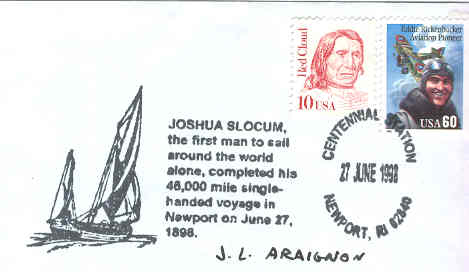
|
| Born in 1893, Alain Gerbault leaves Cannes
on 25 April 1923 on board a 11 m long cutter, FIRE CREST. After
crossing alone the Atlantic ocean, he continues his trip in 1924,
closing the loop after 700 sailing days. |
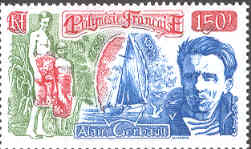
|
|
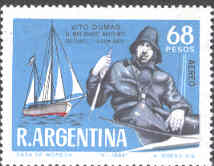
|
In 1942, the Argentin Vito Dumas, is the first to sail around by the
three mythic capes
( Good-Hope, Leewin and Horn) and the roaring forties on LEHG II,
a ketch of 9,55 × 3,30 m.
The trace for future around-the-world tours is made. For the first
time, someone are sailing on the former great clippers route. |
|
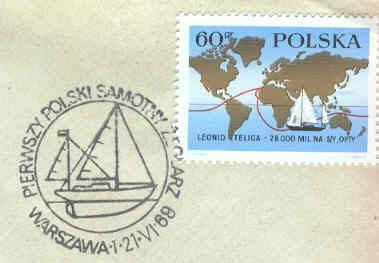
|
Leonid Telica,on OPTY, a 9,85 metres (30 feet) yacht, leaves Gdynia
at the end of 1966. L = 9,85 m
l = 2,75 m
hauteur = 13,5 m
sail area = 60 m²
poids = 5 t.
materials: oak (hull), mahogany, pine (masts), copper, steel, sails
- cotton
canvas
|
| On Cor Caroli (Kor
Karoli), Georgi Georgiev is the first Bulgarian around the world.
First, he is racing in the OSTAR 76 (The Observer
Singlehanded Transatlantic Race) with a 9 m yacht then on 20 December
76, he leaves Havana to come back on 20 December 77 after 24 435 miles
with an average speed of 5 knots.
|
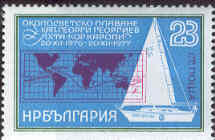
|
|
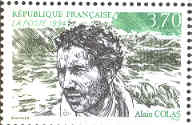
|
Born at Clamecy (Nièvre,
France), Alain Colas sails with Eric Tabarly and Olivier de Kersauzon.
Winner in 20 days of the fourth singlehanded transat on Pen Duick
IV(renamed
Vendredi 13 then Manureva), he is the first circumnavigator without
call on multihull. On Club Méditerranée, he arrives after Tabarly
in the English transat. Disabled by a wound, in 1978 he is at the
depature of the route du Rhum and disappears on sea. |
| The 'Whitbread Round the
World Race' in 6 legs occurs every 4 years and is open to monohulls
in different classes, according to the yachts size. |
|
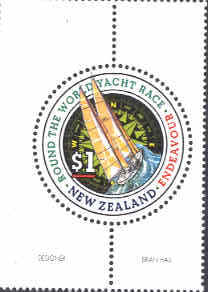
|
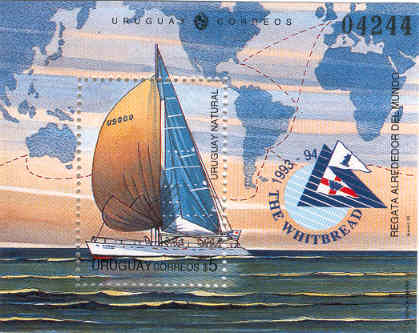
|
|
'New Zealand Endeavour', winner in 1993/94 is a
maxi ketch of 27.2m/89.3', designed by Bruce Farr.
|
|
|
|
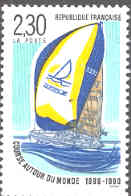
|
In 1989, The French Post engages a crew
of eight postmen in the race with a First 51 Bénéteau, 15.63 metres
long . First in the last stage in her class, the ship will arrive at
Portsmouth after 181 days on sea. |
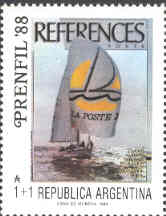
|
|
In 1993, the French Post orders to Bénéteau yards a 25 metres maxi yacht,
rigged as a ketch designed by Bruce
Farr. With Eric Tabarly as skipper, she will finish 7th in 123d 22h. |
|
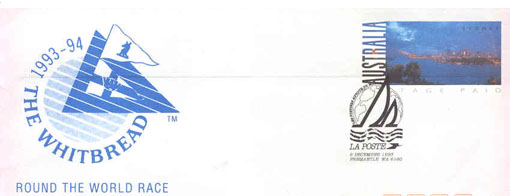
|
|

|
The Whitbread (so called because of its sponsor) became the "Volvo round the world".
The boat depicted on the stamp and miniature sheet, a Volvo 60, is
60 feet (15 m) long with a total weight of 13,5 tonnes. The mast is
29 m high and the engine a Volvo Penta. |

|
|
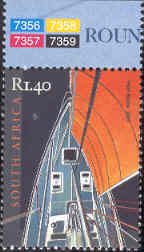
|
|
Around the world solo race, the Golden Globe Challenge, renamed BOC Challenge
then Around Alone, is run every four years with several calls
(three in 82, five today). On 28 December 94, Isabelle Autissier has
5 days ahead with Ecureuil Poitou-Charentes 2 after the
first call (Charleston-
Cape Town). During the second stage, she lost the mast, she
joins Kerguélen
islands jury-rigged (1240 milles to sail !), she gets in the
Archipelago a new mast then resumed the run toward Australia. She
was gaining on the fleet when, on December 28, 60-knot winds and
30-foot seas rolled her boat 360 degrees and pitched it end over
end, tearing the mast and mizzen completely off and leaving a large
hole in the deck, 1000 milles South off Sydney. She was
rescued after four days (in the new year's night...) by an
Australian Air Force helicopter. But the boat is lost... |
|
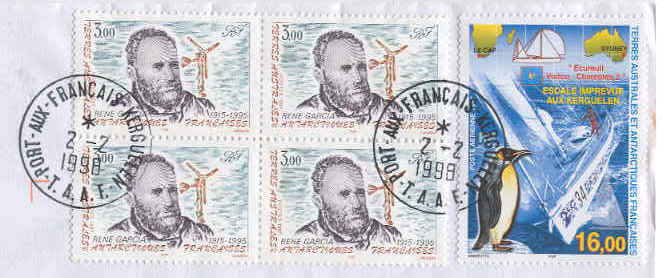 |
|
Ecureuil Poitou-Charentes 2
is a 60 feet open monohull (18,28 m long) designed by
Jean Berret and Olivier Racoupeau. She was made of carbon and was
equipped, the first time for a racing yacht, of a pendular keel. |
|
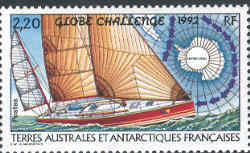
|
The Vendée Globe then Globe Challenge is run for the first time
in 89 : she is a solo round-the-world race, with no help.
Isabelle Autissier is engaged in the third Vendée Globe Challenge starting on 3
November 1996. The rudder brokken, she must call in Cape Town. Then
out of the race, she closes the loop around the world after 105 days.
|
|

Pre-stamped envelope 2004
|
| On
October 15th 2000, eight identical 60 foot racing yachts with 14
volunteer crew and a professional skipper raced away from
Portsmouth. They spent 11 months circumnavigating the globe.
LOA :
59'7" (18.16m) ; LWL: 46' 8" (14.22m)
Beam : 15'7" (4.75m)
Draught : 7' (2.1m)
Displacement : 25,000 Kgs
Hull material : GRP
Mast : anodised aluminium
Mast height : 71' from deck
Sail Area (windward): 2,300
sq ft (213,7 m²)
Sail Area (downwind):
3,700 sq ft (343.75 m²)
Ballast: 8.25 tons
The overall race was divided into sixteen smaller races, each run
between different foreign ports of call. Jersey will finish the race
in second place.
|
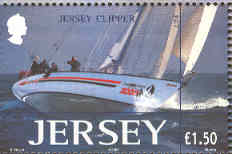
|
|